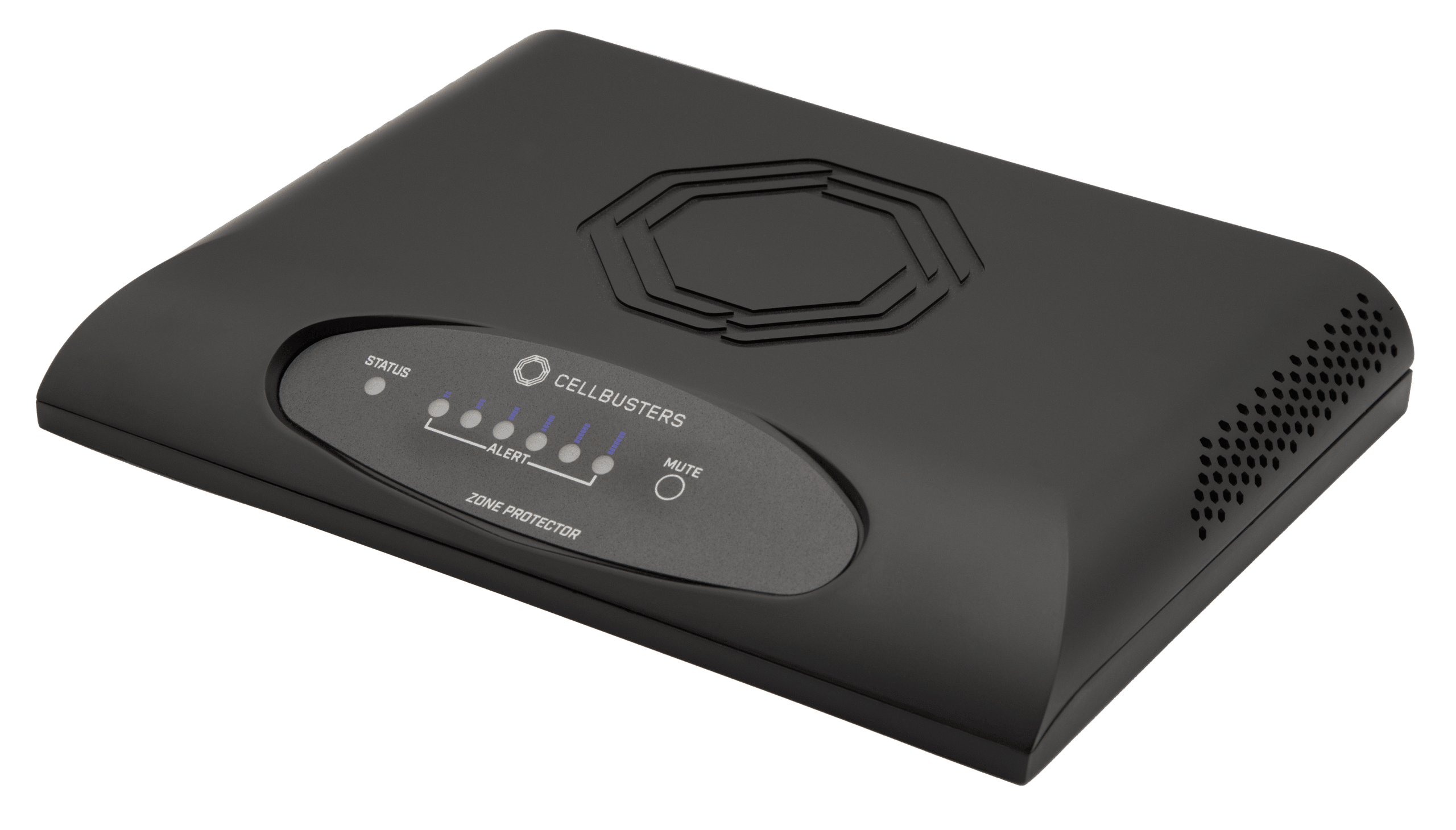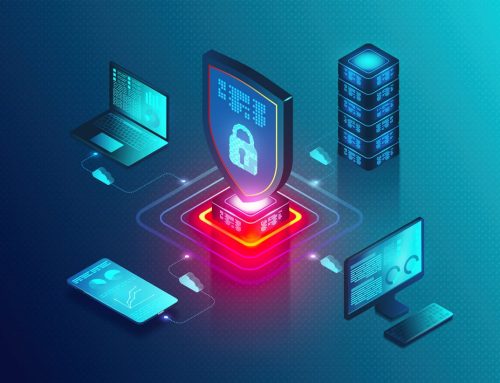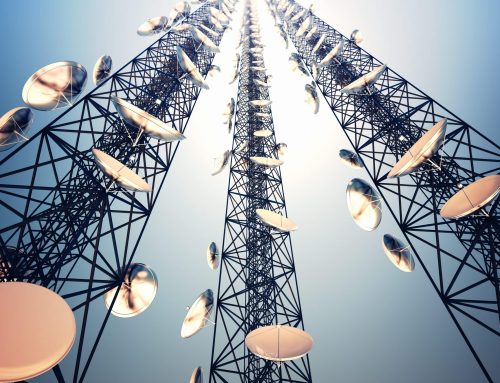In today’s fast-paced world, cell phones have become an essential tool for communication and staying connected. However, the constant ringing and buzzing of a phone can be a disruptive nuisance in schools, offices, and more.
Phones can also pose security threats to military SCIFS, prisons, and other secured areas. Someone could easily sneak one in without the proper security measures in place and leak sensitive information. To combat security threats and general disruption to productivity, cell phone lockers provide a safe and secure place to store phones.
Used in combination with our Zone Protector, it is possible to provide full coverage of all cell phone threats.
What Are Cell Phone Lockers?

Image from Amazon
Cell phone lockers are small storage units that secure and store cell phones or other electronic devices. They often resemble school lockers with individual compartments and come in different models, depending on where the lockers are located. Some even come equipped with USB charger ports or outlets, which make them convenient for users to charge their phone while it’s being stored in the locker.
Schools, gyms, offices, libraries, and other business venues utilize them to help prevent distractions and increase productivity. For example, many testing centers will have cell phone lockers for test-takers to prevent cheating or taking photographs of the test.
Cell phone lockers can also be found in SCIFs (Sensitive Compartmented Information Facilities), prisons, and other secured areas to avoid any sensitive information leaks.
Where Are Cell Phone Lockers Used?

Cell phone lockers can be used in any setting where phone use may be disruptive, prohibited, or where secured storage is needed.
They are commonly used in placed like:
Schools and universities
To cut down on distractions and cheating, many schools now use cell phone lockers for students’ phones during class and test taking.
Museums
Since a number of museums prohibit the use of photography or recording, they’ve been implementing cell phone lockers to provide a safe and convenient place for guests to store their phone.
Fitness Centers
Although many people use their phones to workout with, there are others who want a secure place to store theirs while they complete their reps.
Offices
To avoid a drop in production, some offices are implementing cell phone lockers for their employees to curb distractions. Cell phone lockers are also frequently used in more sensitive offices, such as medical labs, where there is proprietary information or processes.
SCIFS and other military facilities
SCIFS and other government or military areas use cell phone lockers to prevent sensitive information from leaking through recordings or photographs.
Prisons
In a prison setting, phone lockers are used to store the personal cell phones of staff, visitors, and other authorized members in the facility, as cell phones are prohibited inside prisons.
How Do Cell Phone Lockers Work?
Like regular school lockers, cell phone lockers have individual compartments or slots that can be locked with a key, combination, or digital code, depending on the make and model. Some cell phone lockers may also include charging ports or even cameras for additional security.
Most cell phone lockers do not rely on special technology to keep phones secured. They use mechanical or electronic locking mechanisms to secure the compartments. Mechanical cell phone lockers will rely on a key or combination. While this secures the cell phone from being used, mechanical lockers are often at a higher risk of tampering or theft.
Digital cell phone lockers use a digital code or RFID technology to secure the compartments. Each compartment has a small electronic lock that can be programmed with a unique code or RFID tag. To open, users only have to enter their code or tap the tag. Electronic style cell phone lockers tend to be more secure than mechanical lockers, and may even have additional features such as a remote locking.
Types of Cell Phone Lockers
There are several types of cell phone lockers available on the market, each one with their own features. Some features may be optional, depending on where the cell phone locker is being placed and who is using it.
Here are some of the more common types of lockers:
Wall-mounted lockers
As the name implies, these cell phone lockers are mounted to the wall and can save space in a small facility. They are designed to hold several devices at once and can have a range of additional features.
Freestanding lockers
Popular in public spaces like airports and train stations, free standing lockers are larger and stand on the floor. Freestanding lockers can hold a large amount of cell phone devices.
Charging lockers
Newer cell phone lockers now come with the option to have charging ports and cables, and serve as a convenient way to charge a phone while not in use.
Key lockers
Going back to the basics of cell phone lockers, a key locker will serve its purpose by providing the user with a key. These can be useful in offices, where keys are harder to lose.
Combination lockers
Instead of a key, these lockers use combination codes to unlock them. Schools are an excellent candidate for combination lockers since they come without the need to worry about missing keys, while still securing phones.
Digital code lockers
Digital code lockers use a code to secure the compartments, similar to combination lockers. They tend to be more secure than other types of lockers and would do well in highly-secured areas, like prisons.
RFID lockers
The most secure lockers rely on RFID technology to secure the compartments and block signals from tracking the phone. A RFID-enabled card or device will unlock the compartment.
Biometric lockers
Advanced lockers use biometric technology like fingerprint recognition, facial recognition, or even iris scanning to ensure that only an authorized user can access the cell phone locker.
Benefits of Cell Phone Lockers

No matter what type of cell phone locker is installed in a facility, having them provides numerous benefits for almost any industry. These benefits include heightened security, improved productivity, increased safety, and better communication.
Increased Security
The most common reason to install cell phone lockers is the enhanced security they provide. By restricting cell phone usage, it is easier to prevent unauthorized access, theft, and data leaks. It also helps to keep sensitive information confidential and secure. Cell phone lockers are commonly found in secured areas because of this benefit alone, along side other security solutions such as wireless device detectors.
Improved Productivity & Reduced Distractions
Cell phone lockers help improve productivity in settings like workplaces and schools where they prevent users from getting distracted by non-work related activities, like social media or texting. Lockers help employees and students alike engage in their work,participate in learning, and have peace of mind their phone is safe.
Promotes Safety
Along the lines of reducing distractions, having cell phone lockers in workplaces encourages safety, such as in hospitals, factories, and construction sites. By restricting cell phone usage, it helps to prevent accidents and injuries caused by distracted individuals. One text could cause a worker not paying attention to lose a limb or cause an expensive accident to occur.
Encourages Communication and Health
With cell phones put away in lockers, people are more likely to communicate face-to-face, improving connections and fostering better collaboration. With better communication and more of it, mental health among workers is likely to increase, reducing stress and anxiety, which often leads to better overall health and productivity.
How Cell Phone Cell Lockers Can Prevent Leaks
Cell phone lockers play a critical role in security, especially in places like government buildings and SCIFS. In a government building, electronic devices can easily be a source of potential security breaches if they aren’t properly secured. Cell phone lockers help to cut down on leaks by not only providing a secure storage area for them, but in some advanced lockers, using technology to block signals that can transmit information.
By using lockers, government agencies are able to ensure electronic devices are stored securely and not accessible to anyone else. It makes it certain that individuals cannot bring their cell phones into a SCIF, which can be used to take photos, record conversations, or even transmit data. This helps to eliminate the risk of sensitive information from being leaked or compromised.
Along with providing a safe place for users’ cell phones, having cell phone lockers available in secured areas creates a clear and straightforward policy on the use of personal devices. Having a policy means it can be enforced more easily with security personnel, and individuals are more likely to comply with the rules.
They can also be used to account for all electronic devices in a SCIF area and aren’t being used to record or transmit sensitive information. They are typically set up in a security check point area, where visitors or employees can retrieve their phones once they have left the secured area.
Advanced Cell Phone Locker Technology
While most cell phone lockers rely solely on physically locking phones in the storage compartments as a form of safety, there are more advanced locker types on the market that may be equipped with features that help to protect any sensitive information on the phone itself.
For example, some cell phone lockers may have built-in Faraday cages designed to block electromagnetic radiation. This helps to prevent the phone from transmitting or receiving signals while it’s stored in the locker, protecting sensitive information from being intercepted or leaked.
Some lockers may also have RFID-blocking technology. This helps prevent the phone from being tracked or located remotely by blocking radio signals from devices like credit cards and other cell phones. This type of locker uses a conductive material, such as a metal mesh, that helps to create a barrier to reflect and absorb radio waves, blocking the signals from reaching the devices inside the locker. Government workers benefit from this added layer of security, as their phones could contain sensitive information that shouldn’t be leaked.
Although blocking cell phone signals is illegal in many places, some facilities, such as government buildings, prisons, and SCIFS, may be authorized to use these signal blocking cell phone lockers as a preventive measure. If they are allowed to be used, the blocking signals are carefully regulated and controlled.
Increase Your Cell Phone Locker Security with Our Zone Protector

Cell phone lockers are a good starting point when it comes to keeping an area more secure and protecting sensitive information. However, they can only store away the phones that people are willing to admit are in their possession, and even advanced cell phone lockers that use special technology can only do so much.
Other security measures should be implemented as well to ensure maximum security in the facility. For example, many buildings use metal detectors and scanners to find electronic devices that are being smuggled in, as well as conducting regular searches of the facility to ensure there are no unauthorized cell phones.
For the ultimate security, our Zone Protector can help fill in the gaps to detect cell phones that have been forgotten or ones that are trying to be smuggled into a building. The Zone Protector works by scanning a specific frequency range and detecting signals emitted by cell phones. It will then analyze the signals to determine the location of the phone and can then pinpoint its exact location.
Using our Zone Protector is an effective tool for detecting and locating cell phones and, when used alongside cell phone lockers, can help prevent unwanted cell phones from entering secured areas. If you’re interested in our Zone Protector for your building, click here to learn more.






